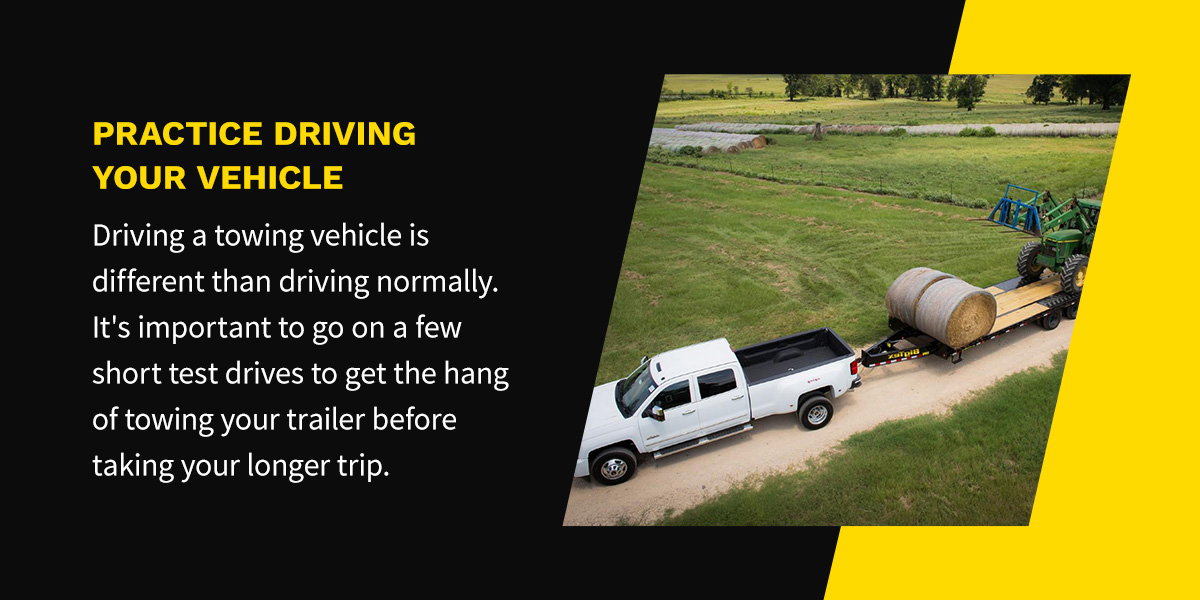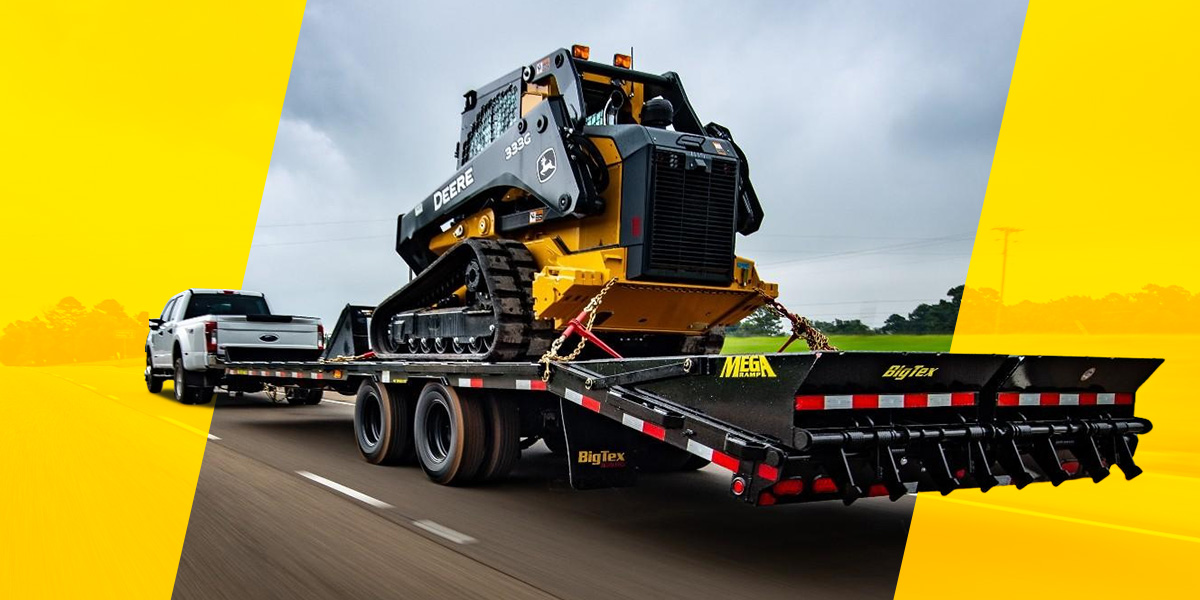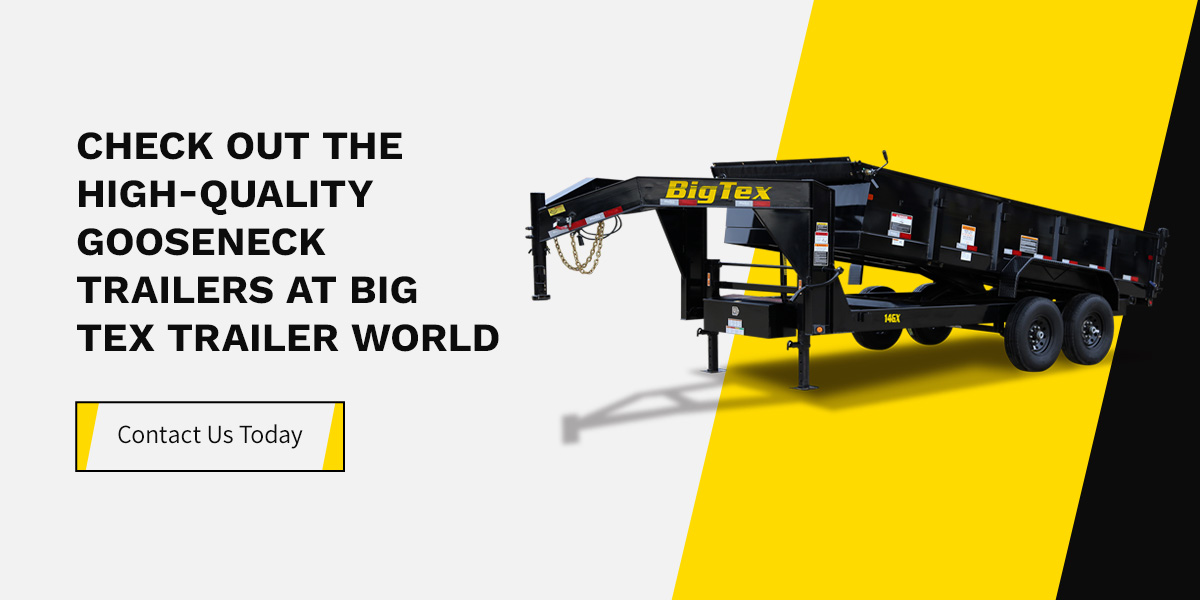ooseneck trailers are popular for towing. They have greater stability and higher weight capacities than bumper-pull trailers, making them an excellent choice for transporting assets. Regardless of what you haul with your trailer, you must do so safely. These towing best practices and tips can get you out on the road and ensure you have a safe trip.
5 Towing Best Practices
Towing for the first time can be an odd experience, especially if you’re hauling a gooseneck trailer. Gooseneck trailers typically go in the same direction as your vehicle when reversing, which is different from other trailers that tend to go in the opposite direction. It can take a bit of maneuvering to find the best tricks for driving with a trailer, but these five best towing practices can get you started.
1. Ensure You Have the Proper Tow Vehicle
Gooseneck trailers have a neck that arches over a truck’s tailgate and attaches to a hitching system in the truck’s bed. Because of this design, you must tow a gooseneck trailer with a pickup truck or heavy-duty vehicle. Ensure your vehicle is large enough and has the right suspension and brakes to tow your trailer. You can consult the trailer dealership to find out if your vehicle can safely tow your trailer.
2. Hook up Your Trailer Properly
You need to ensure you hook your trailer up correctly. Here are the eight steps to connect your gooseneck to your hitching system:
- Find a flat surface: You must find a flat surface to hook up your trailer so your truck and trailer can be on the same level. Ensuring the truck and trailer are level allows for even weight distribution and keeps the trailer from moving while you’re hooking it up, which prevents accidents.
- Lift the trailer: Use a jack to lift your trailer until the truck is under the hitch. Lifting the trailer so it’s under the truck allows for a secure, easy connection.
- Line up the coupler: Use your truck’s mirrors, a backup camera or a spotter to back your truck up until the trailer’s coupler is above the truck’s ball.
- Lower the trailer: Lower your trailer onto the hitch ball and attach it.
- Raise the jackfeet and secure the handle: Raise the jackfeet, ensure they’re upright and lock them in place using the handle. Position the handle away from the hitch so it doesn’t mess up the connection while you’re driving.
- Connect the safety chains and breakaway cable: Attach your breakaway cable and check that it’s long enough to allow turns. Cross the safety chains underneath the hitch, then connect them. The breakaway cable applies the brakes before the trailer disconnects, while the safety chains prevent the trailer from falling off the truck’s bed or ramming into the truck’s cabin.
- Close the coupler: Once everything is aligned, close the coupler and secure the lock.
- Plug the electrical cord into the receptacle: Plug the electrical cable into the receptacle so your lights and brakes work.
3. Check Your Brakes, Lights and Tires
Your brakes must be sufficient enough to stop your vehicle and trailer. You don’t want them to go out while you’re driving, so test them to see if they’re working correctly. Always slowly apply pressure to your brakes until your vehicle comes to a complete stop.
Once you finish checking your brakes, check your lights. All your lights must work for you to legally tow your trailer. After you connect the lights, test all of them to ensure they work.
The last thing you need to check is your tires. Checking the tire pressure helps you avoid flat tires. You should also check that the wheel bearings and lug nuts are tight.

4. Practice Driving Your Vehicle
Driving a towing vehicle is different than driving normally. Taking turns, stopping and other actions require more finesse than usual. It’s important to go on a few short test drives to get the hang of towing your trailer before taking your longer trip.
5. Properly Load Your Trailer
Gooseneck trailers are excellent for towing bulky and heavy items, and you should always tie down your items to secure them. Tying the items down from different angles keeps them from falling over because of sudden changes in speed or direction. Once you load your trailer, check the tongue’s weight. Only 20-25% of the load’s weight should rest on the tongue.
Towing Tips
Gooseneck trailers are common for towing heavier loads longer distances. Here are some towing tips to help you have a smooth journey.
- Make sure your trailer is compatible with your hitch system’s ball.
- Ensure your truck bed is long enough so the trailer’s nose doesn’t hit your cab while you’re towing.
- Use an adjustable coupler that lowers and raises the trailer’s nose so it remains even with different truck heights.
- Check that your trailer has the proper clearance once it’s level.
- Ensure the trailer is all the way down on the ball to lock securely.
- Balance your load evenly front to back and side to side.
- Adjust your side mirrors so you can see the trailer tires from the driver’s seat.
- Gradually increase and decrease your speed. Gradual speed changes are less taxing on your vehicle and trailer and reduce the risk of shifting cargo.
- Learn the towing laws of the states you’ll be traveling through. Some states require you to drive slower than the posted speed limit.
- Determine whether your truck has an electric brake controller you can adjust in the cab.
- The heavier your load, the longer it takes you to stop, so stay at a reasonable following distance to the vehicle in front of you.
- Turn wide because the trailer will cut the corner sharper than your vehicle
Check Out the High-Quality Gooseneck Trailers at Big Tex Trailer World
Gooseneck trailers are excellent for hauling heavy loads for business or pleasure. Regardless of why you need a gooseneck trailer, you’ll want high-quality equipment. High-quality gooseneck trailers can exceed your expectations. They can meet your needs, and they also last longer and perform better. Choosing a superior gooseneck trailer from Big Tex Trailer World ensures you can transport anything.
We have over 20 years of experience servicing, reinventing and selling quality trailers for our clients. With the largest selection of new and like-new trailers, accessories and parts, we’re sure to have the equipment you’re looking for. Our staff works to meet your needs every step of the way, including providing support and service after the sale. Plus, our talented team can service any trailer, even if you didn’t purchase it from us.
We’re committed to helping you find the best trailer for your needs — but we’ll never attempt to persuade you to purchase something you don’t need or want. Contact us today to learn more about our gooseneck and other trailers!

